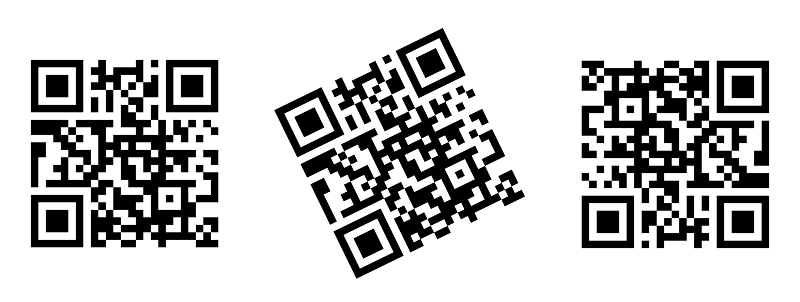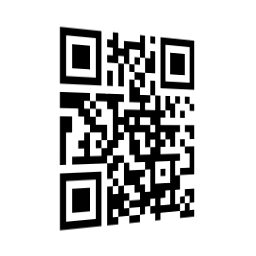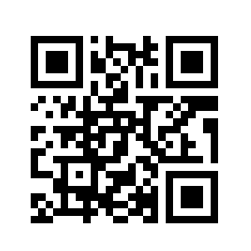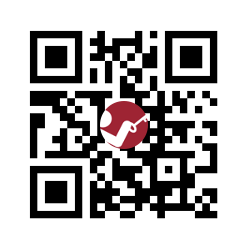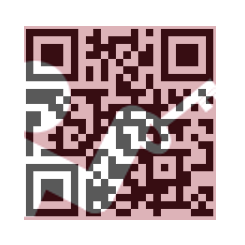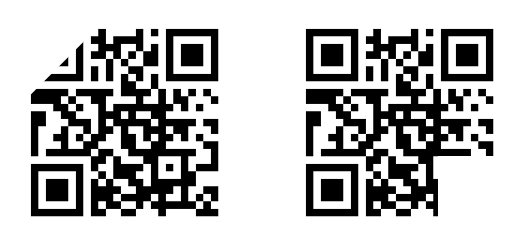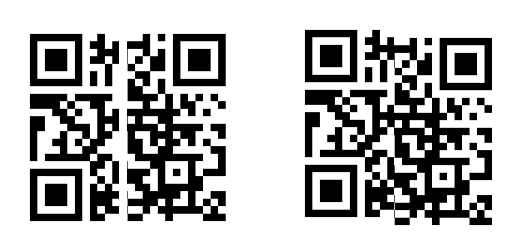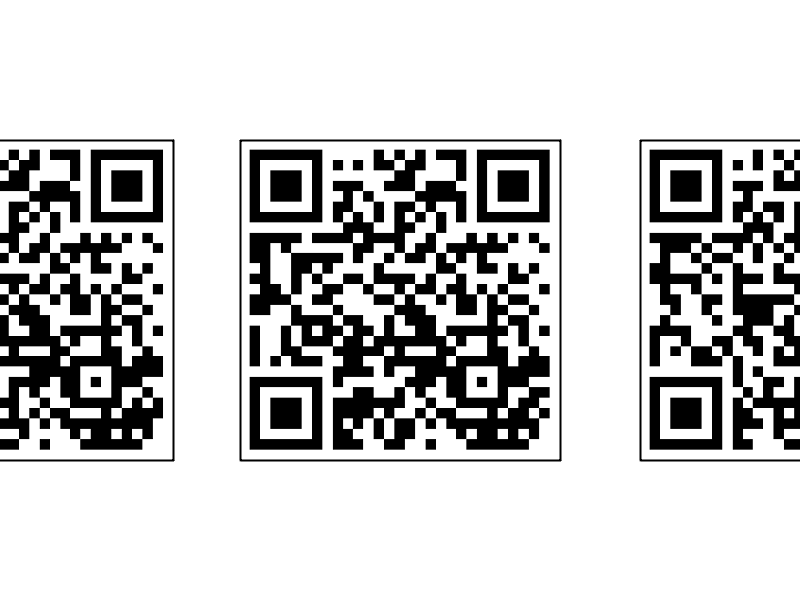Qr Construction
In a home DIY escape room, you can leverage the internet by directing
players to content on their mobile devices using QR codes. As a reminder,
a QR code when scanned with a mobile device’s camera can direct bring up a
particular URL. There are plenty of free services to create a QR code from
any URL you choose,
A QR code can be posted on just about any object, and sometimes QR codes
can be parts of items in the room. But alternately, you can make the
building of QR codes part of the puzzles.
The basic idea of these puzzles is to provide parts of a QR code that have
to be put together in some way. Essentially, these puzzles break apart or
otherwise mangle a QR code, and the players have to put it back together.
Before we talk about how to mangle QR codes, it is helpful to be familiar
with what changes will not break a QR code and which will. This is
important as the design of a QR code construction puzzle involves breaking
the QR code and having the player fix it.
Changes you can make to QR codes
QR codes are designed to be quite resilient to change. Because they are
designed to be scanned from a camera, they are readable in
the face of noise and misalignment. Thus, it is possible to rotate the QR
code or even flip it upside-down and it will still work.
Not surprisingly, the QR code can be sheared in the same way that might
happen if the camera is not held perfectly straight.
Surprisingly, QR codes can be mirrored and will still work.
There is redundancy in a QR code’s data, and they still can be read when
certain parts are covered up. In particular, the center part of the QR code
is redundant, and it is common to place a logo there.
'It is also possible to blend a QR code with another image as long as there
is enough contrast between the 2 colors of the QR code. This can be
particularly helpful for QR construction puzzles as it gives hints to users
on the proper orientation of the image pieces.
Changes that break QR codes
As resilient as QR codes are, once you break off a big enough piece, it
will no longer be readable. When making a QR construction puzzle, you want
to force the players to put together all of the pieces before it can be
scanned.
When you look at a QR code, you will see “eyes” in three of the corners as
well as a smaller alignment eye in the fourth corner. QR scanners use these
elements to register the position of the code, and removing any of them
will make the code unreadable.
An interesting vulnerability of QR codes is that the matrix of squares has
to be precise. In the following example, the left image splits the two
halves of the code by a small amount. The right image shifts the two halves
a little bit vertically. Despite the changes being very small, they render
the codes inoperable. This means once you separate the QR into pieces, it
needs to be possible to align them again precisely.
Puzzles
With that in mind, here are some puzzles based on putting together QR code
pieces.
 | Make a jigsaw puzzle by cutting a QR code that players must reassemble. |
 | Complete a QR code by using simple Origami folds. |
 | Solve a 3D rotating cube puzzle to expose a QR code. |
 | A sheet of paper must be folded backwards to line up a QR code. |
Subsections of Qr Construction
Jigsaw QR
Print a QR code, and then cut the code into pieces.
To solve the puzzle, the players have to place the pieces to form a square
and the correct QR code to scan and get the next clue.
The shape of the pieces does not matter a lot. However, it is better if
they are constructed such that there is only one way to form them back into
a square. They should also each contain a critical part of the QR code so
that the code cannot be scanned without all of the pieces. Lots of shapes
can satisfy these conditions, but here is a pattern that works
well.
The players will have to place the pieces precisely to read the code
properly. To facilitate this, print a reasonably large code (about
4in/10cm). It also helps to print on a heavy weight paper.
QR Fold In
This puzzle presents the players with a piece of paper with pieces of QR
code printed on it. The codes cannot be properly scanned on the flat paper.
The trick is to fold the paper to bring the pieces of QR code together. I
suggest using a simple fold reminiscent of Mad Fold-Ins (also known as
an origami pleat fold).
Creating a fold-in image is not difficult. Simply cut the image in half and
separate the two pieces by some distance perpendicular to the cut.
The folds have to be pretty precise to be properly scanned. To help, you
can provide a little overlap in the QR pieces and guiding lines on where to
fold and align the two pieces.
Figuring out and doing one fold is pretty easy. If you want to add an extra
challenge, you can make a second fold in a different direction. This can be
done by cutting the image for a fold in one direction, and then treating
the entire result as an image and cut in a different direction. (Note that
the players will have to fold in the opposite order you cut the images to
create it.)
Here is an example that requires a horizontal fold and then a little more
tricky diagonal fold.
QR Cube
Turn a 3D rotating cube puzzle, like a Rubik’s Cube, into a key for your
escape room by gluing a QR code to one of its faces. Mix up the puzzle, and
then have the players unscramble the QR code to proceed.
To be clear, solving Rubik’s Cube puzzles is tricky, and it is unreasonable
to expect players to solve the entire puzzle. But solving one face of the
cube is much easier, and someone not familiar with the puzzle should be
able to put together a QR code on one side.
This puzzle is easy to make, but there are a few things to keep in mind.
First, although the most common form of puzzle is made of 3x3x3 bricks,
consider getting a 2x2x2 puzzle like the one pictured above. This will be a
bit less time consuming for players, particularly those not experienced
with Rubik’s Cube. More importantly, the 3x3x3 puzzle has a square in the
middle of each space that can be arbitrarily rotated in the solved face.
Rotating the middle section might break the QR code, and it is hard to
understand the correct orientation in a QR code.
Second, speaking of the orientation, it is possible to get all the correct
colors on the same face but in the wrong position. If this happens with the
QR code, the orientation will be wrong and it will not scan. Although not
pictured here, consider superimposing a second, more recognizable image on
the QR code, like demonstrated below, to help players orient the squares
correctly.
Third, remember that the alignment of the QR code pieces have to be fairly
precise to scan correctly. To help this, print the QR code to a heavy
weight paper to help it hold its shape as the puzzle is spun. Also, to make
sure the orientation is correct, glue the code on first and then cut it in
place. Put a dab of rubber cement on each square of the face and press the
QR code to the cube. Then take a sharp knife and cut the paper along the
seams of the cube.
Fold Back QR
This QR construction involves a single piece of paper. It has half of a QR
code on each side and (optionally) a QR code in the middle.
The middle (full) QR is a decoy. If players scan it, it just leads to a
red herring.
The real clue is the other QR code, which is divided in half and placed at
opposite ends of the paper. The left half of the QR code is on the right
side of the paper and the right side of the QR is on the left side of the
image.
To solve the puzzle, players must fold the page backward to bring the two
ends together on the opposite side.
On the other side, players must line up the edges of the QR code.
To make the QR alignment possible, the ends of the paper need to be trimmed
right to the QR code. Also note that to make the code work players need to
be precise about the alignment. Thus, make sure there are enough cues (like
the bounding box shown here) to get the alignment correct.




